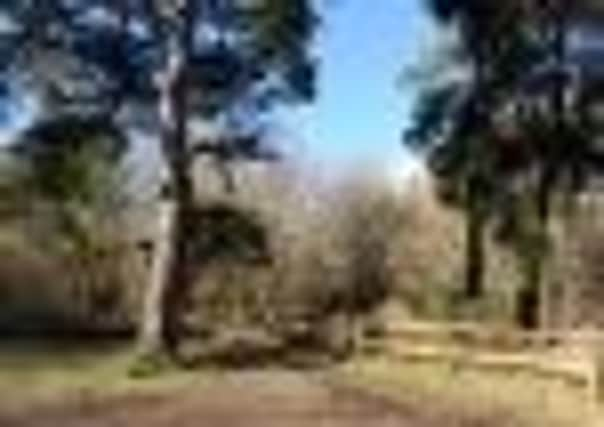Hidden history of displaced Poles in West Chiltington woods


Simone Kaptor is hoping readers of the County Times will be able to help her surmount a ‘deafening wall of silence’ that surrounds this sensitive World War Two period.
Research of Jerzy Kaptor’s life after his death aged 77 in January 2010 has slowly unveiled a story of Soviet deportation from Poland to a Siberian Gulag, formative years in Indian refugee camps, and tantalizing clues about a camp at Monkmead Woods, West Chiltington.
Advertisement
Hide AdAdvertisement
Hide AdSimone’s father left a beautifully illustrated leather bound journal, written in his native Polish during the last year he spent in India before his family moved to the UK.
Its contents is both mysterious and highly emotive for Simone, who is reticent to have it translated by anyone without a connection to the history of displaced Poles.
However, one incongruous slip of paper, stuck on the page and written in English sparked her interest in West Chiltington.
On it is simply written ‘West Chiltington Camp, Pulborough, West Sussex, England’ and there is a signature that is difficult to distinguish below -perhaps Bork Marion is the name, or similar.
Advertisement
Hide AdAdvertisement
Hide AdWhile her father never stayed at the West Chiltington camp, she is aware some of his contemporaries did pass through it in the years following the war, and she hopes by learning more about and the people who stayed there she will better understand her father.
The 43-year-old Worthing resident knows he was a refugee and also deported to Siberia from his native Poland.
She said: “My father was stateless for years, and being a psychotherapist I find that interesting because there was a statelessness about my father – there was a lack of connection.”
However, trying to find out more about the wartime period that he would never talk of is proving difficult.
Advertisement
Hide AdAdvertisement
Hide Ad“It is a deafening silence that you’ve grown up with and it is a weight on your back that there is something there but it is never to be mentioned.”
As part of her continuing investigations Simone has visited Monkmead Woods, but many questions still remain.
“What was it like? What was the life like? Where did they come from?”
Perhaps some readers of the County Times will have a connection with this period and be able to help Simone add to what she has already discovered.
Advertisement
Hide AdAdvertisement
Hide Ad“I’ve got other information that says in 1947 due to a bad winter they shut down the camp,” said Simone.
“And I got a message from someone else who remembers going there as a young girl and she was sure it was a transient camp, and remembers being given ID and they were there for ten days only.
“But how long were other people there for?” asked Simone.
There were 700 Canadian soldiers based there during the war Simone has been informed.
“It says on the sign Canadian Army but no mention of what it was used for afterwards – and that’s just one camp, apparently there were quite a few around.”
If you can can help Simone with her quest to understand her father email [email protected] or write to the paper’s usual address.